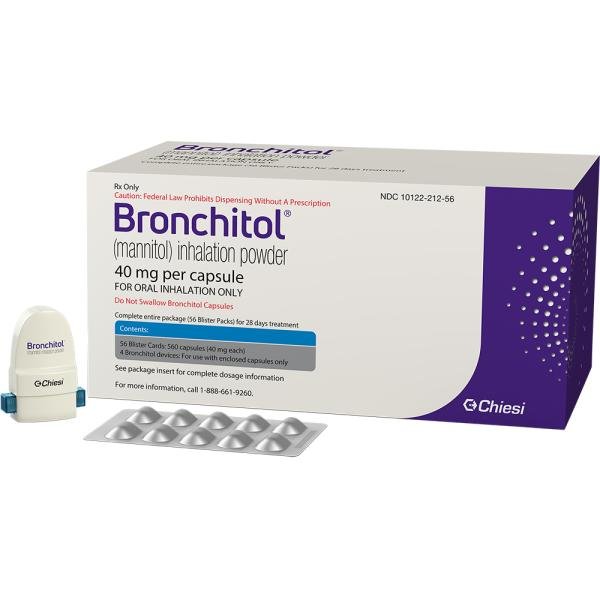Bronchitol Interactions
There are 137 drugs known to interact with Bronchitol (mannitol), along with 2 disease interactions. Of the total drug interactions, 12 are major, 123 are moderate, and 2 are minor.
- View Bronchitol disease interactions (2)
Medications known to interact with Bronchitol
Note: Showing generic names only.
A
B
C
- canagliflozin
- captopril
- carbamazepine
- carboplatin
- casanthranol
- cascara sagrada
- castor oil
- cisatracurium
- citalopram
D
- dapagliflozin
- demeclocycline
- desvenlafaxine
- diatrizoate
- digitoxin
- digoxin
- dimethyl fumarate
- diroximel fumarate
- doxycycline
- droperidol
- duloxetine
E
- empagliflozin
- enalapril
- enalaprilat
- epoprostenol
- eravacycline
- ertugliflozin
- escitalopram
- eslicarbazepine
- exenatide
F
G
H
I
- iloprost
- indacaterol
- iodamide
- iodipamide
- iodixanol
- iohexol
- iomeprol
- iopamidol
- iopromide
- iothalamate
- ioversol
- ioxaglate
- ioxilan
- irinotecan
- irinotecan liposomal
- isoetharine
K
L
M
- magnesium citrate
- magnesium hydroxide
- maraviroc
- metaproterenol
- metrizamide
- milnacipran
- mineral oil
- minocycline
- mivacurium
- mixed grass pollens allergen extract
- moexipril
- monomethyl fumarate
N
O
P
- pancuronium
- paroxetine
- peanut allergen powder
- pentoxifylline
- perindopril
- phenolphthalein
- pirbuterol
- plazomicin
- polyethylene glycol 3350
- polyethylene glycol 3350 with electrolytes
Q
R
S
- salmeterol
- selexipag
- senna
- sertraline
- sibutramine
- sodium nitrite
- sotagliflozin
- sparsentan
- streptomycin
- succinylcholine
T
- taurine
- terbutaline
- tetracycline
- tigecycline
- timothy grass pollen allergen extract
- tobramycin
- trandolapril
- treprostinil
V
Bronchitol disease interactions
There are 2 disease interactions with Bronchitol (mannitol) which include:
More about Bronchitol (mannitol)
- Bronchitol consumer information
- Compare alternatives
- Drug images
- Side effects
- Dosage information
- During pregnancy
- FDA approval history
- En español
Related treatment guides
Drug Interaction Classification
| Highly clinically significant. Avoid combinations; the risk of the interaction outweighs the benefit. | |
| Moderately clinically significant. Usually avoid combinations; use it only under special circumstances. | |
| Minimally clinically significant. Minimize risk; assess risk and consider an alternative drug, take steps to circumvent the interaction risk and/or institute a monitoring plan. | |
| No interaction information available. |
See also:
Further information
Always consult your healthcare provider to ensure the information displayed on this page applies to your personal circumstances.


